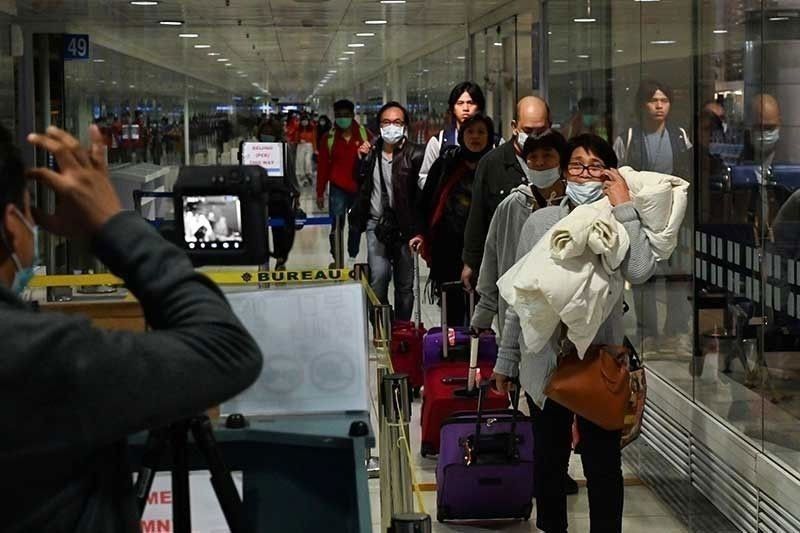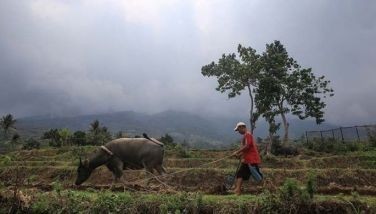Quarantine, testing rules for inbound travelers revised

MANILA, Philippines — A mandatory 14-day quarantine for all travelers entering the Philippines has been imposed by the Inter-Agency Task Force for the Management of Emerging Infectious Diseases (IATF), Malacañang confirmed yesterday.
Presidential spokesman Harry Roque Jr. said the quarantine rule – 10 days in a facility and four days at home if negative for COVID-19 on the seventh day from arrival – is without prejudice to whether a traveler already got vaccinated in the country of origin.
Citing the IATF meeting last Thursday, Roque said the new protocol is aimed at preventing an India-like situation in which the health care system has collapsed due to the massive spread of an aggressive variant of the coronavirus.
“Other than the new protocols for mandatory 10-day quarantine facility and the conduct of PCR (polymerase chain reaction) test on the seventh day, and the genome sequencing, we continue to increase our health care capacity,” Roque said.
He said the IATF has decided to step up the need for more quarantine facilities, ensuring a stable supply of medical oxygen and the stockpiling of drugs such as Remdesivir.
All these efforts will be done to prevent what has been seen in India, where daily cases reaching the hundreds of thousands resulted in patients sharing beds and dying because of a shortage in supply of oxygen.
On the issue of medical oxygen, Roque said in Filipino: “We have enough supply but we are looking at a contingency if we will need additional oxygen (supply) just in case it is necessary.”
On health care capacity, he said: “Right now, we are increasing the number of isolation beds, temporary treatment and monitoring facilities (TTMF) and the ward beds.”
“We have no problems now because we are bordering between 60 and 50 percent (capacity). We are working to increase them in case somehow the Indian variant penetrates our system,” he added.
Earlier, President Duterte ordered a ban on travelers coming from India due to the prevalence of the B1617 variant there, which is being blamed for the fast and massive transmission of COVID-19.
The government also imposed a travel ban on passengers from Pakistan, Bangladesh, Nepal and Sri Lanka until May 14.
Testing protocol
In its resolution No. 114, the IATF underscored anew the continuous implementation of proactive measures and restrictions to prevent the surge of COVID-19 cases in the country.
It said there is a need to “stop further spread of the virus, buy time for the health system to cope and to protect more lives.”
Roque said this is the reason why travelers must be subjected to reverse transcription PCR testing on the seventh day from arrival and that even if they turn out negative for COVID-19, would still have to complete 10 days of isolation in a quarantine facility.
“The first ten days of which shall be spent in a quarantine facility, with the remainder to be completed under home quarantine in their respective local government units of destination,” he said, adding that they will be under strict symptom monitoring by the Bureau of Quarantine (BOQ).
At a separate press briefing, Department of Health (DOH) Undersecretary Maria Rosario Vergeire noted that the IATF rule no longer requires swab testing upon arrival and that there will be no testing on the fifth day either.
“There will be a resolution from the IATF, specific agencies concerned to draft the necessary protocols so we can implement it. But all the agencies agreed we should do the soonest possible time,” she said.
Apart from the DOH, involved in the operation of the new protocols are the Departments of Foreign Affairs (DFA), of Transportation (DOTr), of Tourism (DOT), of Labor and Employment (DOLE), the Interior and Local Government (DILG), the BOQ and the Overseas Workers Welfare Administration (OWWA).
The DOT shall lead the establishment of a “One Hotel Command,” together with other agencies, to immediately and efficiently address concerns of those undergoing facility-based quarantine.
The DILG, through the Philippine National Police (PNP), shall augment the Philippine Coast Guard (PCG) in providing security in quarantine facilities.
Also, the DOH shall coordinate with the OWWA, DOTr, DOT, BOQ and the University of the Philippines-National Institutes of Health on enhancing symptom tracking mechanisms and providing additional personnel to process and act on symptom tracking information.
The IATF further approved and adopted the Guidelines on Point-to-Point Air Travel for Leisure Purposes from the NCR Plus Areas of the DOT.
Nayong Pilipino vaccination facility
Meanwhile, Tourism Secretary Bernadette Romulo-Puyat supported the National Task Force Against COVID-19’s proposal to convert the Nayong Pilipino Foundation (NPF) property into a vaccination site where up to 12,000 individuals can be immunized every day.
Amid resistance from the NPF board, Puyat appealed for it to give way to the government’s plan to build a vaccination facility at the property in Parañaque City.
The tourism chief said she still shares the board’s vision to develop the property into a wildlife reserve and public park and vowed that the planned vaccination facility is just temporary.
“While the DOT’s mandate is the recovery of the tourism industry, it must submit to a higher goal of saving the lives of Filipinos,” Puyat told The STAR. – Sheila Crisostomo, Elijah Rosales
- Latest
- Trending

































